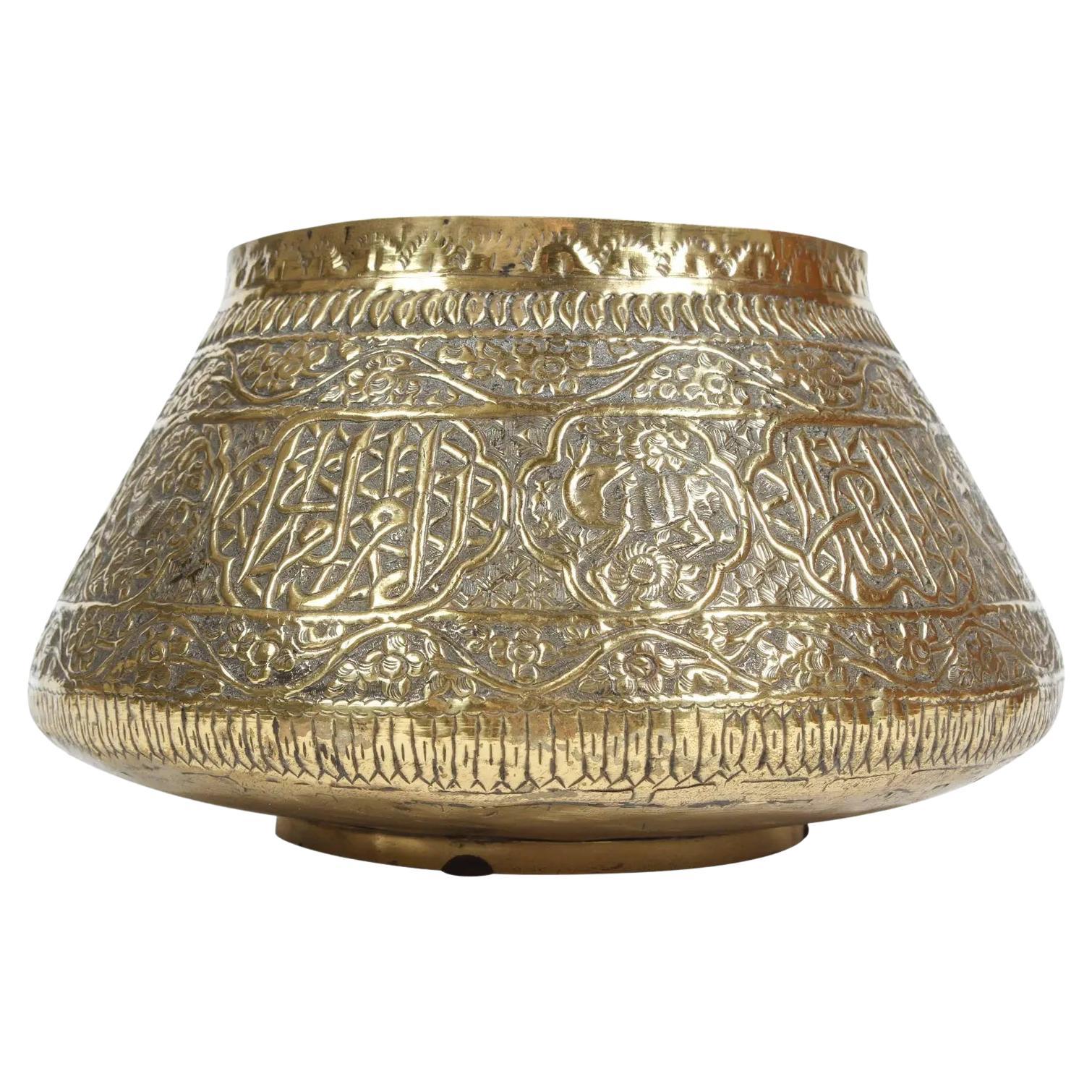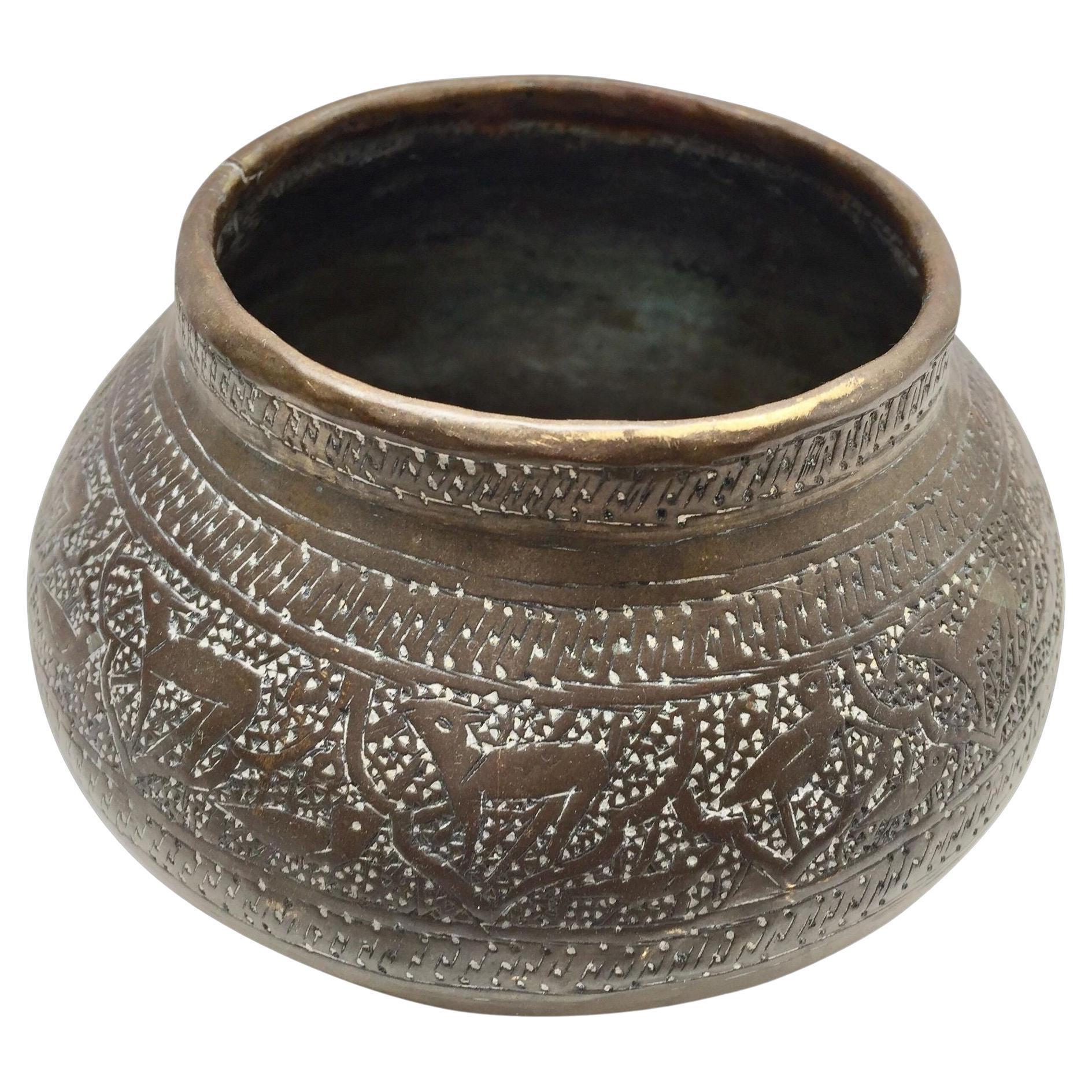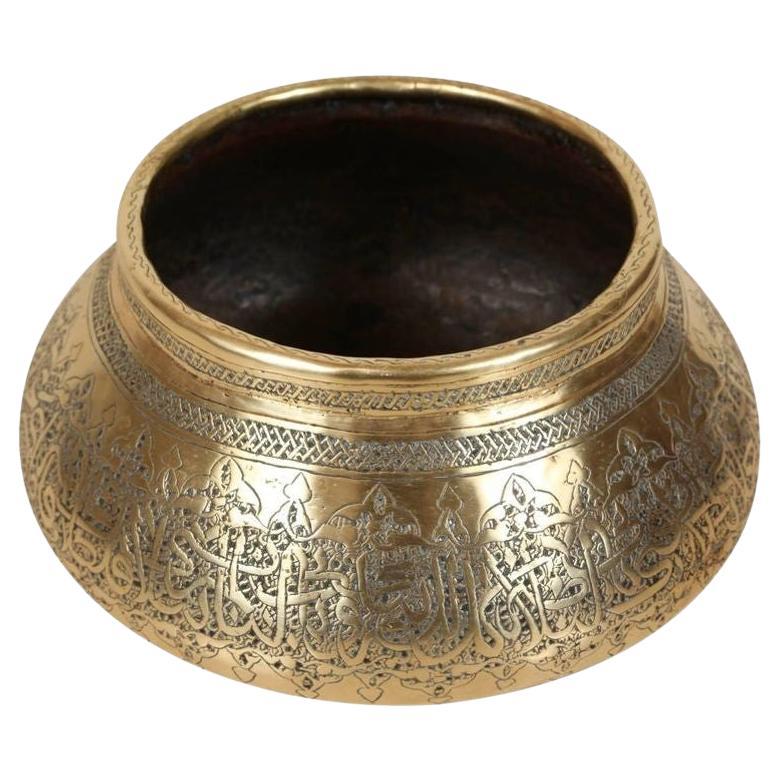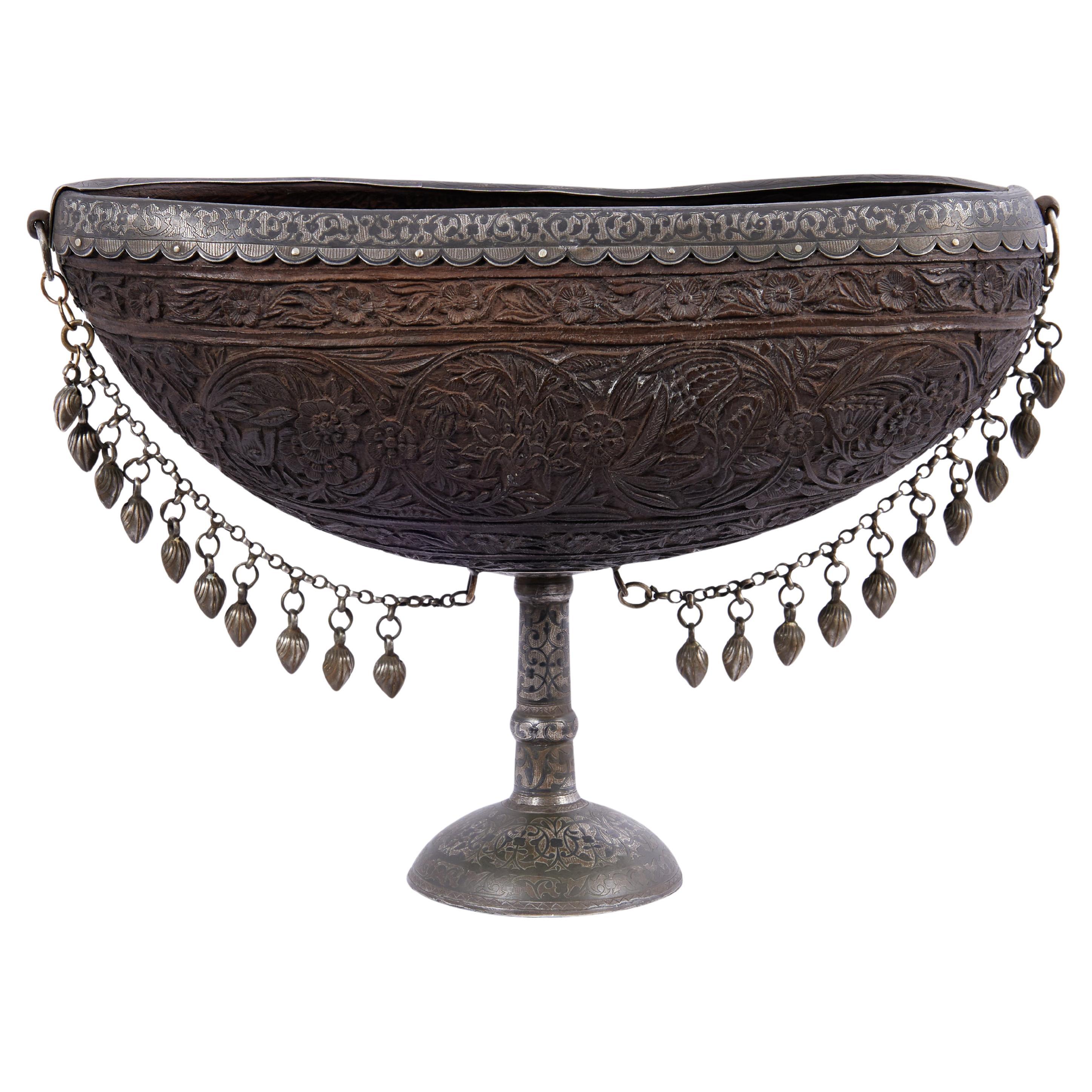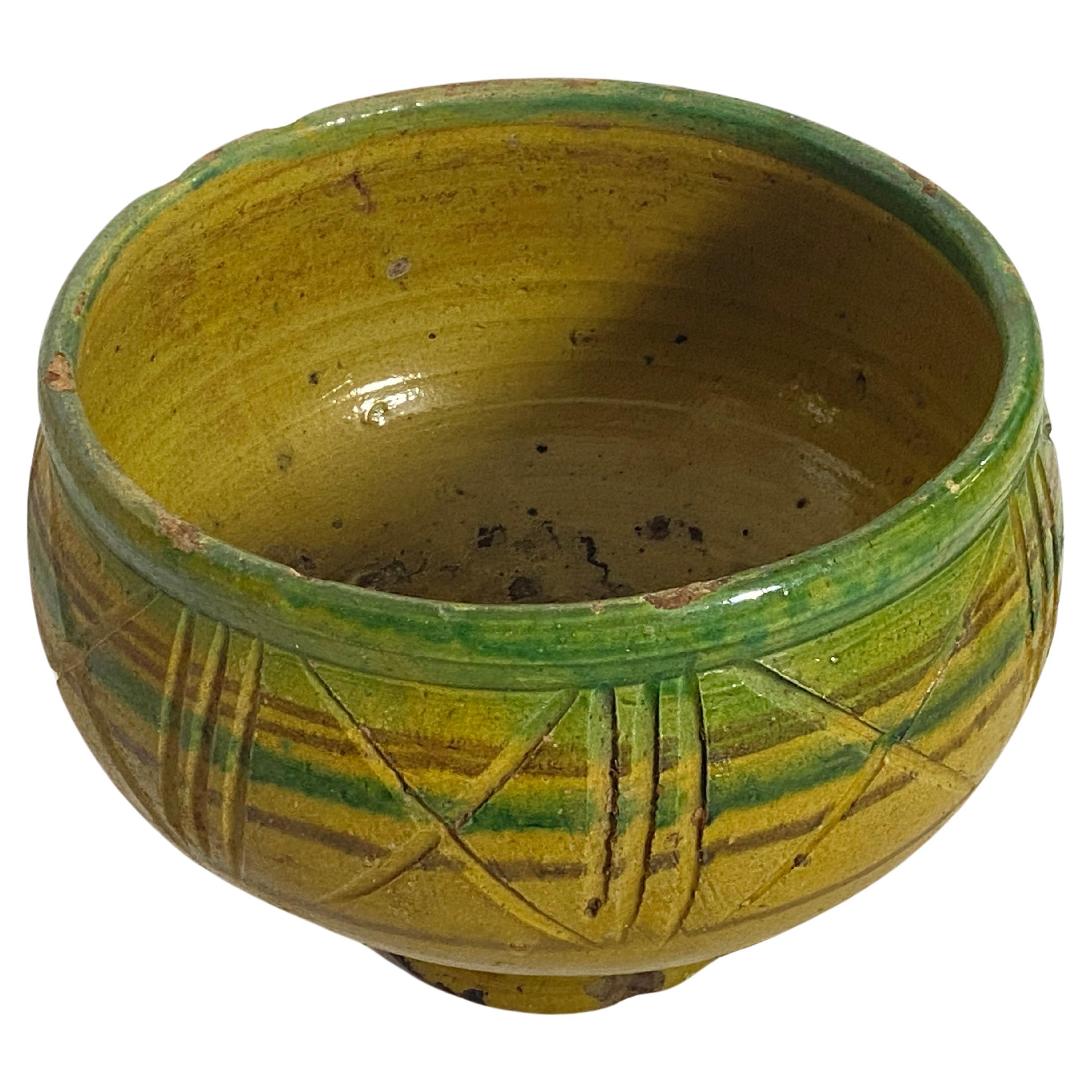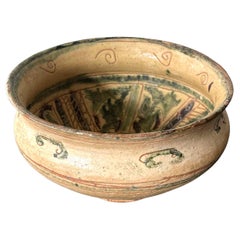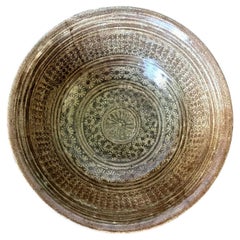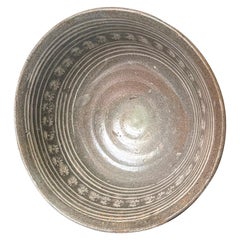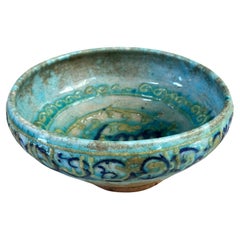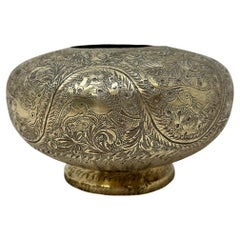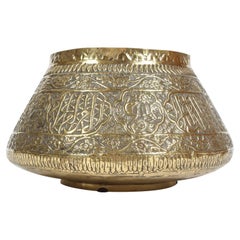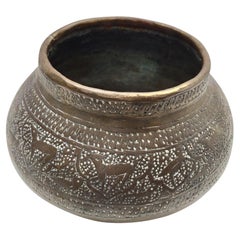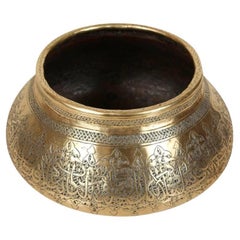Items Similar to Elaborately Carved Antique Beggar's Bowl Kashkul
Want more images or videos?
Request additional images or videos from the seller
1 of 17
Elaborately Carved Antique Beggar's Bowl Kashkul
$8,000
£6,070.22
€6,940.75
CA$11,173.83
A$12,423.78
CHF 6,487.01
MX$151,227.65
NOK 82,771.45
SEK 77,552.89
DKK 51,800.09
Shipping
Retrieving quote...The 1stDibs Promise:
Authenticity Guarantee,
Money-Back Guarantee,
24-Hour Cancellation
About the Item
A fine Kashkul carved from half of the giant nutshell of Coco-de-mer likely from Persian Qajar Dynasty circa 18-19th century. Kashkul is a container known as the beggar's bowl, carried by wandering Dervishes, member of the Sufi sect of Islam and used to collect alms. As the most emblematic accoutrement for the ascetics, Kashkul symbolizes the renouncement of all worldly possessions and subsisting on the generosity of humanity. The Kashkul on offer takes an organic shape of a boat with a sprout for pouring, taking the advantage of the natural form of the coco-de-mer. The surface was finely decorated with carvings. Scrolling floral motif on the top surface surrounds animal figures including a gazelle, a horse and a lion or leopard. The mid-body has a circumventing band with a repeating Persian/Arabic phase inscription (not fully deciphered, likely a Koranic phrase in an archaic form, possibly Nastaliq as the first word is Allah). The bottom features a central figure donning a tall hat with flowing hair and beard, resting an axe on his shoulder. This depicts the story of prophet Ibrahim who destroyed the false idols people worshipped. Originally, the kashkul was attached to a chain, which is no longer present but the two pin holes on top remain.
This is a wonderful example of an Islamic work of art in its original fine condition. For similar examples in the same material dating to the similar period, see collection in MET (2019.300); V&A (876 dash 1889) and Aga Khan Museum (AKM640). A similar kashkul was sold in Christie's sale no.15505 (Oct 25th; 2018) Lot 118.
- Dimensions:Height: 6 in (15.24 cm)Width: 13.5 in (34.29 cm)Depth: 6.5 in (16.51 cm)
- Style:Islamic (Of the Period)
- Materials and Techniques:
- Place of Origin:Iran
- Period:
- Date of Manufacture:18th-19th Century
- Condition:Wear consistent with age and use. Fine condition with mellow patina and minimal expected wear.
- Seller Location:Atlanta, GA
- Reference Number:1stDibs: LU945034063872
About the Seller
4.9
Platinum Seller
Premium sellers with a 4.7+ rating and 24-hour response times
Established in 2006
1stDibs seller since 2010
564 sales on 1stDibs
Typical response time: <1 hour
- ShippingRetrieving quote...Shipping from: Atlanta, GA
- Return Policy
Authenticity Guarantee
In the unlikely event there’s an issue with an item’s authenticity, contact us within 1 year for a full refund. DetailsMoney-Back Guarantee
If your item is not as described, is damaged in transit, or does not arrive, contact us within 7 days for a full refund. Details24-Hour Cancellation
You have a 24-hour grace period in which to reconsider your purchase, with no questions asked.Vetted Professional Sellers
Our world-class sellers must adhere to strict standards for service and quality, maintaining the integrity of our listings.Price-Match Guarantee
If you find that a seller listed the same item for a lower price elsewhere, we’ll match it.Trusted Global Delivery
Our best-in-class carrier network provides specialized shipping options worldwide, including custom delivery.More From This Seller
View AllAntique Islamic Ceramic Glazed Bowl with Splashed and Sgraffito Decoration
Located in Atlanta, GA
A small Islamic ceramic bowl circa 11-12th century, possibly from Nishapur or Aghkand area of Persia. The elegantly shaped bowl with a slightly flared opening is supported on a small foot rim. The earth ware...
Category
Antique 15th Century and Earlier Persian Islamic Ceramics
Materials
Ceramic
Antique Korean Ceramic Buncheong Bowl Joseon Dynasty
Located in Atlanta, GA
A Korean ceramic bowl supported on a short ring foot in the classic Buncheong (or Punch'ong) style from early Joseon Dynasty circa 15th century. The bow...
Category
Antique 15th Century and Earlier Korean Archaistic Ceramics
Materials
Ceramic
Ceramic Bowl Buncheong Ware Joseon Dynasty
Located in Atlanta, GA
A Buncheong (also spelled as Punch'ong) stoneware tea bowl from Korea Joseon Dynasty circa 15-16th century. The conical shape bowl in the classical styl...
Category
Antique 16th Century Korean Archaistic Ceramics
Materials
Ceramic
Islamic Glazed Ceramic Bowl with Relief Inscription
Located in Atlanta, GA
An Islamic glazed ceramic bowl with inscription attributed to Raqqa ware, produced during the Ayyubid dynasty (12-13th century) in the town of Raqqa in nowadays northeastern Syria. T...
Category
Antique 15th Century and Earlier Syrian Islamic Pottery
Materials
Ceramic
Antique Lacquer Offering Elm Bowl Southeast Asia
Located in Atlanta, GA
A Southeast Asian lacquer vessel of iconic form from Burma or Northern Thailand, circa turn of the 20th century. This covered vessel is called a “Hsun Ok” and was made in the form of...
Category
Early 20th Century Burmese Archaistic Lacquer
Materials
Wood, Lacquer
Islamic Glazed Pottery Bowl with Kufic Calligraphy Nishapur Ware Provenance
Located in Atlanta, GA
An earthenware pottery bowl in conical shape supported by a short foot ring covered in white slip and decorated with black slip paint of calligraphy in Kufic script. This type of bowl is identified as Nishapur ware circa 10-11th century (in nowadays Iran). It was made either in Samanid Dynasty (819–999) or the successive Ghaznavid Empire (977–1186) before the Mongol invasion. The white glaze on the vessel's exterior was thinly applied, resulting in areas with streaks of opaque yellowing. The black slip paint was used to decorate the bowl in flowing Kufic script before a transparent top glaze was applied. The writing, consisting of cursive strokes in bell shape, is likely an Arabic Maxim.
Under UV examination, the bowl shows some professionally restoration as described in condition. It comes with a custom-made acrylic stand as shown.
Provenance: From an American collection, thereby descent. Purchased from Yacobs Gallery, London England, July 1998. Two digital copy the original hand-written documents...
Category
Antique 15th Century and Earlier Persian Islamic Ceramics
Materials
Ceramic
You May Also Like
An antique Hand-Chiseled Indo-Persian Brass Bowl
Located in North Hollywood, CA
An antique Hand-Chiseled Indo-Persian Brass Bowl.
An exquisite antique Indo-Persian brass bowl, masterfully hand-chiseled with intricate arabesque, floral, and animal motifs.
Crafted...
Category
Early 20th Century Decorative Bowls
Materials
Brass
Middle Eastern Brass Bowl with Arabic Calligraphy Writing
Located in North Hollywood, CA
Large antique 19th century or before brass Middle Eastern Persian Islamic style footed bowl finely and heavily hand-etched and embossed with brass repousse and decorated with calligraphic decoration inscriptions medallions.
A large Mamluk style brass bowl, hammered and engraved brass, with slightly rounded base, inverted sides narrowing to rim, the exterior engraved with a large honorific thuluth inscription, alternating with roundels containing blazons.
Islamic work from the the 19th century, in the style of Mamluk productions.
Handcrafted and embossed with geometric designs and Arabic writing on brass vessel.
Great brass decorative collectible Islamic metal...
Category
Antique Late 19th Century Asian Islamic Decorative Bowls
Materials
Brass
Middle Eastern Egyptian Moorish Hand-Etched Islamic Brass Bowl
Located in North Hollywood, CA
Metal brass Middle Eastern Moorish Islamic bowl finely and heavily hand-etched and hand carved with brass repousse. 19th century Islamic Egyptian hand-et...
Category
Early 20th Century Moorish Decorative Bowls
Materials
Brass
Antique Islamic Brass Bowl Fine Metalwork Hand Etched Bowl
Located in North Hollywood, CA
Antique Middle Eastern Islamic art Moorish brass bowl engraved with Thuluth Arabic calligraphy.The polished brass bowl is profusely chased with vines and vegetal motifs and inscribed with Islamic verses of the Holly Koran.This bowl has been professionally cleaned and polished.Measures: Diameter 7.25" x 4" height Mouth opening: 5".Great Middle Eastern brass metalwork decorative Islamic art objects.Handcrafted Moorish hand-etched Islamic metal brass bowl.Engraved, incised and hammered with very fine Arabic Islamic calligraphy writing and geometric designs on brass vessel.Very Intricate fine Middle eastern Moorish Islamic Art metalwork, museum quality artwork.Late 19th Century.Date of Manufacture: Circa 1880.Condition: Wear consistent with age and use.
Islamic brass metalwork is an intricate and beautiful form of art that originated in the Islamic world. It encompasses a wide range of decorative objects made from brass or other metals such as copper, bronze, and silver. Brass trays, in particular, are highly regarded for their craftsmanship and intricate designs.
Islamic brass metalwork has a rich history that dates back to the early Islamic period, with its roots in the metalworking traditions of ancient civilizations such as the Persians, Greeks, and Romans. However, Islamic artisans developed their own unique styles and techniques, blending elements from various cultures and creating distinctive motifs that reflected Islamic aesthetics and religious beliefs.
The process of creating brass trays involves several steps, each requiring specialized skills. Here is a general overview of the traditional techniques involved:
1) Design: A skilled artist or calligrapher creates the design for the brass object. Islamic brass metalwork often incorporates intricate geometric patterns, arabesques, floral motifs, and calligraphy inspired by Quranic verses or poetry.
2) Metalworking: The object is typically made from a sheet of brass or another metal. The metal is cut into the desired shape and then hammered or pressed to create the object. Traditional techniques such as repoussé (hammering from the reverse side) or chasing (hammering on the front side) may be employed to shape the metal.
3) Engraving: The surface of the metal is often decorated with intricate engravings or etchings. Skilled artisans use chisels, gravers, or other specialized tools to create fine details and elaborate patterns.
4) Filigree and Inlay: Some brass trays feature additional decorative elements such as filigree or inlay work. Filigree involves shaping thin wires of brass into delicate patterns and soldering them onto the tray's surface. Inlay work, on the other hand, involves embedding contrasting materials such as silver or copper into the brass, creating intricate designs.
5) Surface Treatment: After the main decorative work is complete, the tray may undergo surface treatments to enhance its appearance. This can include processes like polishing, buffing, or applying various chemical patinas to create an aged or oxidized effect.
While this bowl has certainly witnessed the passage of time, it remains in remarkably good condition, with only minor signs of age that add character to its appearance. The patina on the brass enhances its antique allure, making it a truly authentic and captivating collectible.
Arabic Calligraphy: The Arabic writing on the bowl is a work of art in itself. The calligraphy showcases the mastery of the scribe's hand, with flowing curves and intricate details that form an elegant script. The script may include Quranic verses, blessings, or poetic verses, depending on the bowl's origin and purpose. The inscriptions are not only visually striking but also carry profound meaning, making this bowl a beautiful representation of Islamic heritage.
Intricate Patterns: In addition to the Arabic calligraphy, the bowl features intricate geometric patterns and motifs that further enhance its visual appeal. These patterns are a hallmark of Islamic art and reflect the mathematical precision and artistic creativity that defined Islamic craftsmanship.
This antique Islamic brass bowl...
Category
Antique 19th Century Turkish Islamic Metalwork
Materials
Brass
Antique Anglo Indian Coco de Mer Footed Bowl
Located in Palm Beach, FL
Rare antique Anglo Indian compote bowl handcrafted with a coconut carved with floral design decorated in jewelry-like metalwork and mounted on a classic inscribed and enameled base.
Category
Early 20th Century Indian Anglo-Indian Decorative Bowls
Materials
Coconut
Ancient Persian Rare Bowl Islamic Pottery Art
Located in Auribeau sur Siagne, FR
Stoneware bowl, enameled; Made in syria Circa 15th and Earlier.
Green and Yellow colors. Hand painted Pottery.
Category
Antique 15th Century and Earlier Unknown Serving Bowls
Materials
Stoneware
$425 Sale Price
20% Off
More Ways To Browse
Antique Floral Bowl
Carved Wood Chain
Antique Arabic Furniture
Arabic Antiques
Carved Wood Hat
Islamic Wood
Carved Lion Mid Century
Antique Wood Carved Lion
Lion Bowl
Arabic Wood
Boat Bowl
Lions Wood Carvings
Carved Wood Boat
Antique Carved Wood Bowl
Persian Qajar
Horse Wood Carving
Resting Horse Sculpture
Antique Persian Qajar

